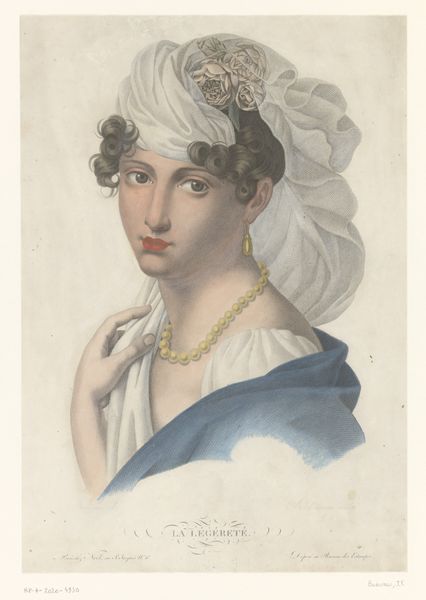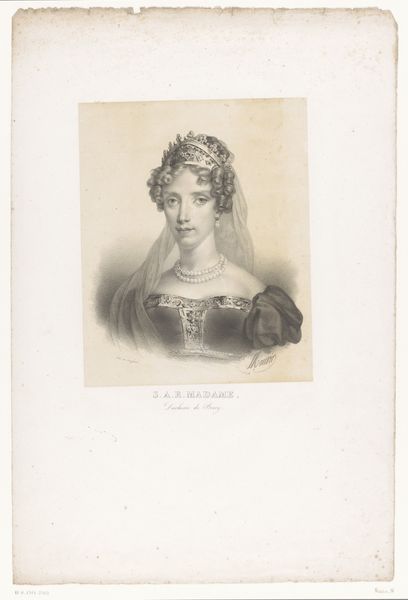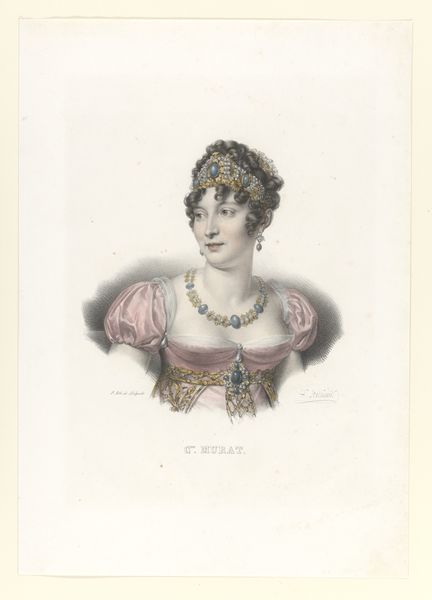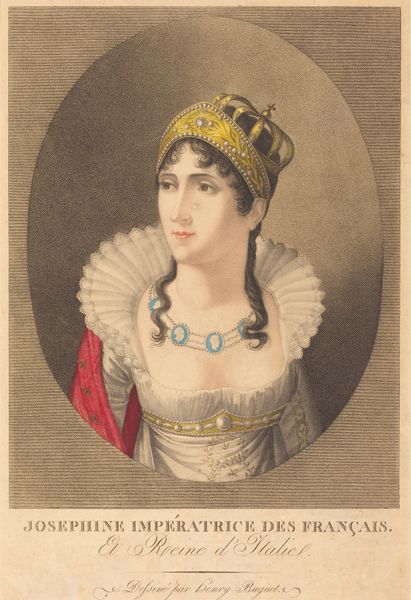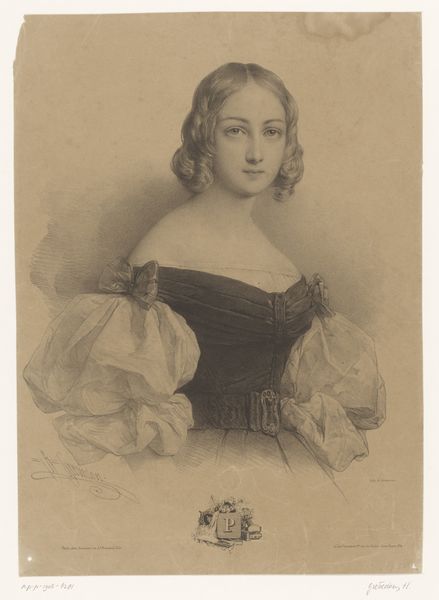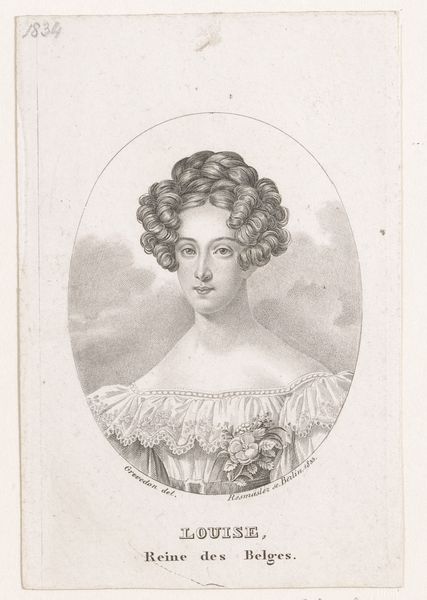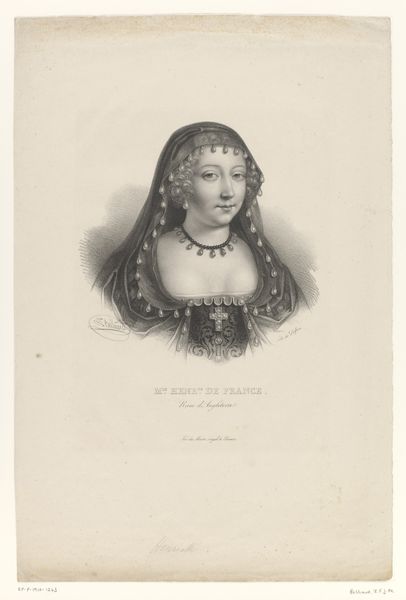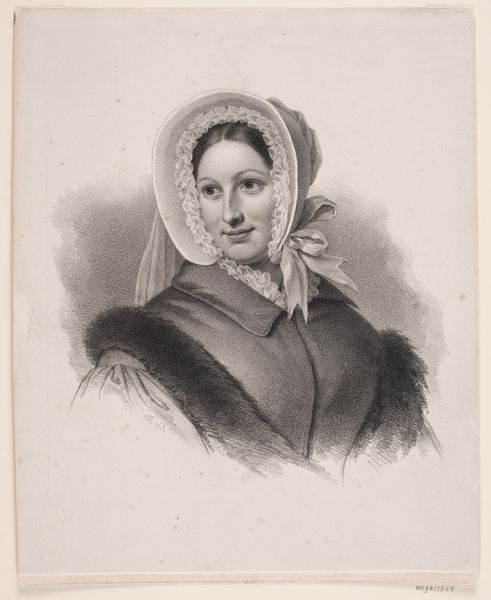
Franse vrouw met oorbel met blauwe edelsteen, witte sluier en rozen in het haar 1809 - 1822
0:00
0:00
painting, watercolor
#
portrait
#
painting
#
caricature
#
watercolor
#
pencil drawing
#
romanticism
#
portrait drawing
#
portrait art
#
fine art portrait
Dimensions: height 470 mm, width 356 mm
Copyright: Rijks Museum: Open Domain
Curator: I’m immediately struck by the serene and slightly melancholic air of this portrait. There’s a delicate balance in the color palette, but something about the slightly glazed look in her eyes… Editor: Indeed. What we’re looking at here is a watercolor and pencil drawing, believed to have been created between 1809 and 1822 by Pierre-François-Isidore Décle. The work is titled “Franse vrouw met oorbel met blauwe edelsteen, witte sluier en rozen in het haar”—or, "French woman with blue gemstone earring, white veil and roses in her hair.” Curator: The artist’s focus on detail is remarkable. Notice how the layering of color in her dress—the soft blue of the fabric, offset by the rich red shawl—draws the eye, establishing a visual harmony. But is it merely beauty? The somewhat rigid pose gives her an almost doll-like quality. Editor: That’s an insightful observation. During the Romantic period, portraits like this weren’t just about capturing a likeness. They were about projecting social status and embodying ideals of femininity and even nascent ideas of national identity. This woman is literally labeled "La Française," isn't she? Curator: Precisely. And what about the materiality? The translucence afforded by the watercolor creates an interesting ethereal effect, and it contrasts interestingly with the crisp pencil lines used to define her features. Editor: Consider the setting of the portrait within the broader socio-political landscape of post-revolutionary France. Décle, and other artists like him, were constructing and circulating images of women that reinforced evolving social structures, class, and even cultural norms. Curator: So, you’re suggesting that the details, even the jewelry, are not just decorative, but indicative of broader societal messages. Editor: Absolutely. These portraits operated within specific power dynamics. Who was commissioning them, for what purpose, and what did it mean to present oneself in this manner? The medium allows for mass reproduction which is key. Curator: I’m struck, revisiting her eyes, by how much they hint at both conformity and perhaps, a quiet internal life. It's hard to decipher. Editor: And there it is - the power of portraiture and historical inquiry! We are drawn into speculation beyond mere appreciation of color and line. Curator: A reminder that looking closely—with a little theory as our lens—reveals entire worlds within brushstrokes. Editor: Exactly. We have glimpsed her image through formal beauty and into the story of the French society which bore her.
Comments
No comments
Be the first to comment and join the conversation on the ultimate creative platform.
